Céline Mülich
Visiting museums in Barcelona and writing about them is my daily business, an ordinary activity that lately has been converted into something really special.
With the museums being closed for weeks, we had to get back to virtual experiences, such as consulting the web, online collections, podcasts, videos, social media or virtual visits to enjoy the beauties of the museums and their collections.
The Museu Nacional did a great job in disseminating knowledge in a rigorous, but still fun way. My favorite post was the one about people in their artworks with bad haircut 😉 What a smart way to connect with users taking as a common ground a real issue many were experiencing over the past days!
Quin és el pitjor tall de cabell de la nostra col·lecció? Us proposem navegar pel nostre web i compartir amb nosaltres les vostres troballes! #elMuseuNacionalACasa #AmbNens pic.twitter.com/Eczv24knnu
— Museu Nacional, Bcn (@MuseuNac_Cat) April 30, 2020
Now that the Museu Nacional is getting ready to re-open and rather than analyzing their online presence, I would like to take you to the museum, guiding your imagination with my words. I take you with me on a traditional, on site visit, complementary to the online experience, not in opposition!
And I pick this particular museum because of its unique collection, but I’ll come to that later.
First of all: up the hill it goes
We start at Plaça Espanya and there is no way you can miss the museum: the huge building is overlooking the entire area. The way up to seems to be steep, but no worry, there are also escalators that bring you up! And it comes even better: there will be a shuttle bus from Plaça Espanya up to the museum!
The museum is located in the Palau Nacional, a former pavilion of the World Exhibition of 1929/30. In 1934 the Museu d’Art de Catalunya opened and showed Catalan art from the Middle Ages to the Baroque and in 1990 the Modern Art was added forming the museum as it is now. The Italian architect Gaetana Aulenti was responsible for the interior design of the museum – she also created the one of the Centre Pompidou and the Musée d’Orsay in Paris!
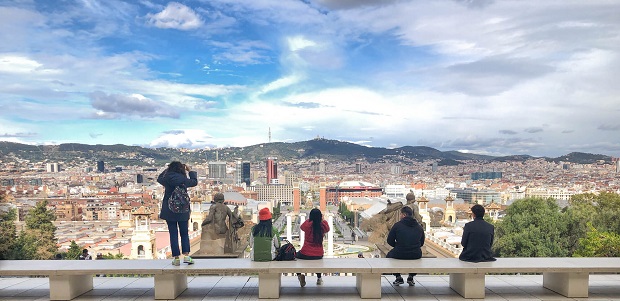
Before entering we enjoy the views over the city, maybe sit down for a while and soak up the atmosphere to somehow get ready for what we are about to see.
The Museu Nacional is like all museums with big collections: you have to get your bearings, otherwise you’re lost in art. There are definitely many things to see, so I pick my personal best-of tour. No judging, no ranking among artworks or artists!
Medieval Romanesque Art: unique in the world
Said the above, there is no doubt that the collection of Medieval Romanesque Art from the 11-13th centuries is very special, so I do recommend you start with this one while you are still fresh (in mind and body).
The mural paintings, taken off from the churches in the Pyrenees a hundred years ago (to save them from being sold and shipped abroad!), are set up with mock apses, so you get a real feeling how they have looked like in their original settings.

This part of the collection also boasts panel paintings, metalwork and sculptures in wood and stone.
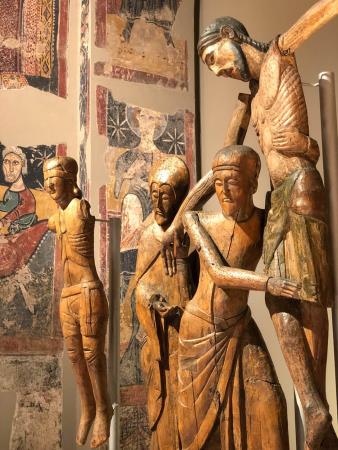
What I most like in these rooms is this serene atmosphere. The museum has managed to create an overall experience, 4D in a sense! See the art, listen to the silence and get transported in a magic way 1000 years back in time.
Modern Art: widen your art horizon
There is more to see in the museum, so let’s continue to another highlight: the collection of Modern Art from the 19th-20th centuries, which includes works from the Catalan Modernisme and Noucentisme movements. Need some names? Miró, Picasso, Gaudí to start with the ones you probably have most heard of.
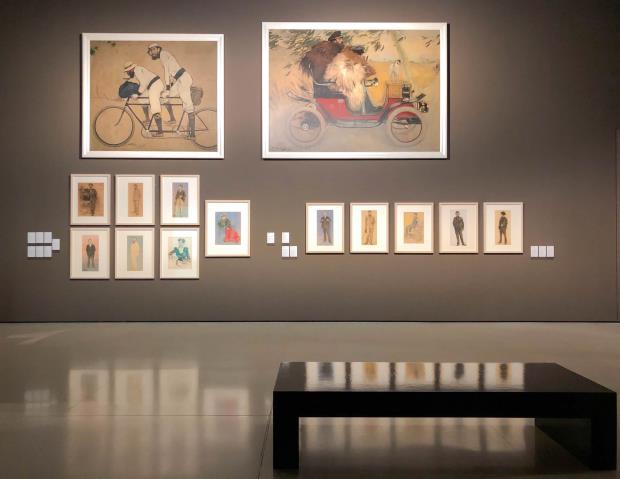
and Ramon Casas and Pere Romeu in a Motor Car, in the superior part. Photo: Jacqueline Glarner
But these rooms are a fantastic way to go beyond and discover artists that are not so well known to a wider public, especially from outside Catalonia and Spain. Look out for Ramon Casas, Santiago Rusiñol, Marià Fortuny and the sculptures of Juli González!
The display of this collection was remodeled six years ago to offer a more holistic approach to this period of art history combining for instance paintings, photography, poster art and the decorative arts. Just like the rooms of the Medieval Art, they form a beautiful coherence, so necessary to offer a museum visit to be remembered!
Have a break, discover the building
One notices right away that the Palau Nacional was not built to host a museum. Why, otherwise, would we have a huge Sala Oval or a Dome and a Throne Room, which now hosts the Restaurant?
It is definitely worth wandering around the building and on the first floor in the Dome Room you have some nice sofas to rest and admire the richly decorated cupola!
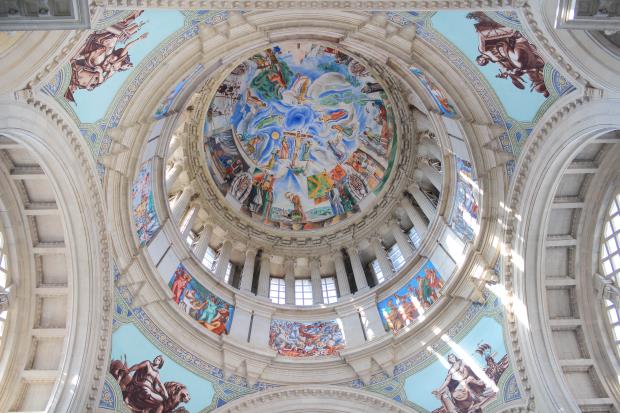
Medieval Gothic: name the artists
Now that we are refreshed, we continue and jump back to Medieval Art, this time to the 13th-15th centuries. What’s special for this period is that actually the first names related to Catalan art appear.
I recommend watching out for the works of Jaume Huguet, my favorite one. His paintings look so fresh and, to me, have even a modern twist, and this despite their age!

There is, of course, much more to discover in these rooms, so just do as you please, spend some more time here or move on to the next collection area.
Renaissance and Baroque Art: meet the known and the unknown
Ready for art history class? In these rooms you can see the evolution of European art in the 16th-18th centuries. Like in Modern Art rooms, you can find artists you might not have heard of before like Joan de Burgunya, Ayne Bru and Antoni Viladomat alongside major, well known artists, such as El Greco, Tiziano, Velázquez and Rubens.
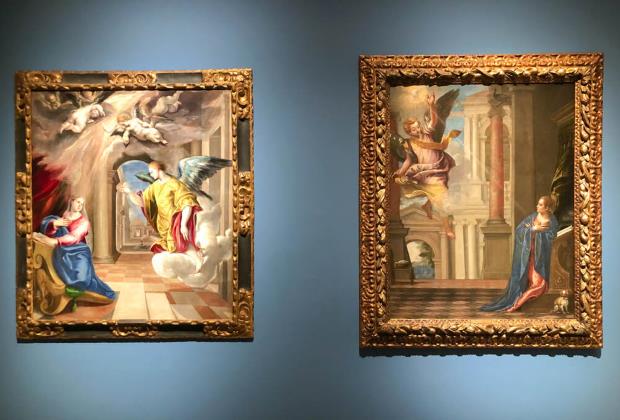
So far, we have gone through the four main areas of this museum highlighting some periods of time or specific artists or the building itself. To complement your visit, I invite you to check out the full collection on the website adding photography, numismatics, drawings, prints and posters to your basket!
The rooftop: embrace the museum
A bit tucked away from the main museum entrance is the elevator to the rooftop terrace. Take it, don’t leave it out! It’s an extra 2€, but it’s definitely worth it. Not only for the views you have over Barcelona, but, or specially, for the fact that you can actually walk half around the museum at this height!
To me, it feels like giving the museum a giant hug and discovering details you would not see from underneath.
In addition, the views towards Fundació Miró, the Montjuïc parks, the Olympic Stadium and the old botanical garden are so special that they should not be missed. A perfect way to end the visit!
The visit of the future
I will certainly go back to the Museu Nacional once it will have opened again and I strongly believe that the core experience of visiting the museum will not change with new hygienic measures put in place. It is, however, a crucial factor to find the right balance between implementing necessary measures and still creating a welcoming atmosphere and hence, a positive user experience.
Putting the focus on this very experience will be, to my opinion, more important than ever. And this includes not only setting up interesting displays and exhibitions but informing well visitors what they can expect (ticketing, access, rooms that might be closed, etc.), so as to gain their trust before they head out to the museum. For example, we already know that now you will not be able to go up to the Rooftop terrace, until further notice.
It will be interesting to see how museum visits evolve in the future, how people act and how museums react (or should it be the other way round, with a proactive museum?). I hope that the actual visit to the museum will even gain more importance and that many people not so used to it will be curious to experience firsthand what they might have seen on their computers.
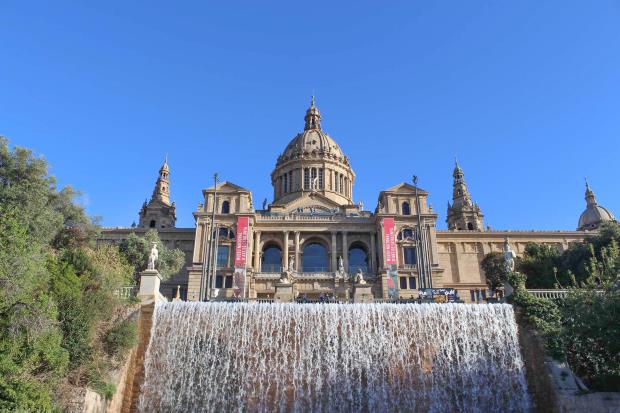
Céline Mülich
Céline Mülich is the founder of barcelona-museum.de. Trained as an art historian and historian, her work focuses on providing verified information for potential museum visitors including all aspects of the visit.







